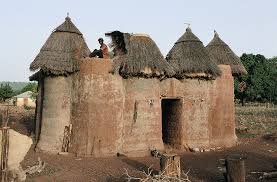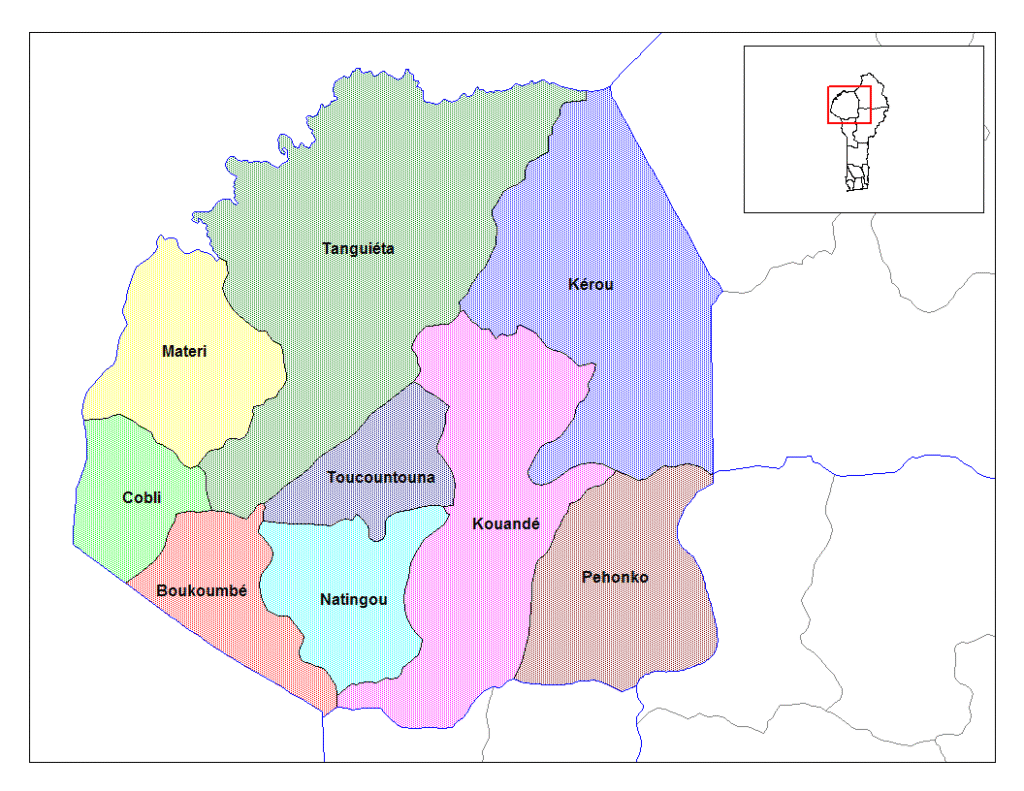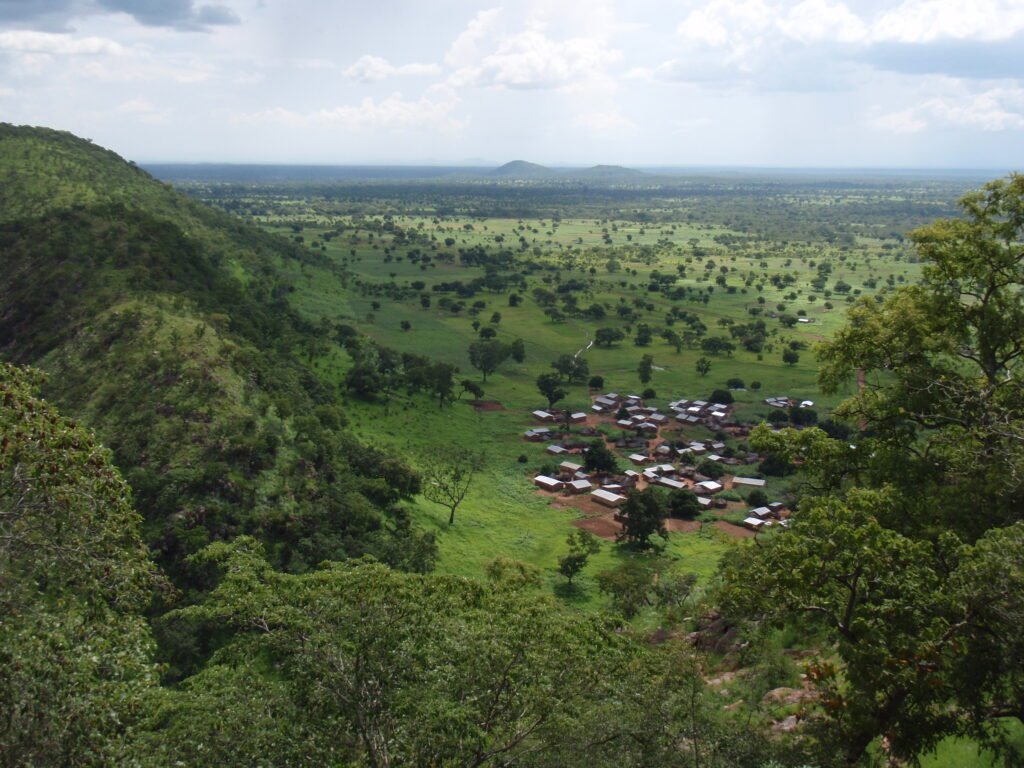
Atakora [a.ta.kɔ.ʁa] (also spelled Atacora, named for the Atakora Mountains) is the northwesternmost department of Benin. Externally it borders Togo to the west and Burkina Faso to the north; internally it borders the departments of Alibori, Borgou and Donga. Major towns in the Atakora include Natitingou and Tanguiéta, and the major tourist areas include the Tata Somba houses, Pendjari National Park, and various waterfalls. The department of Atakora was bifurcated in 1999, with its southern territory removed to form the newly created Donga Department. The capital of Atakora Department is Natitingou, which lies among the Atakora Mountains.

As of 2013, the total population of the department was 772,262, with 380,448 males and 391,814 females. The proportion of women was 50.70%. The total rural population was 62.80%, while the urban population was 37.20%. The total labour force in the department was 170,333, of which 27.20% were women. The proportion of households with no level of education was 72.80%.
Atakora Department is located in the northwest of Benin, bordering Burkina Faso to the north, Alibori Department and Borgou Department to the east, Donga Department to the south and Togo to the west. The terrain is mainly forested mountains, from which two tributaries of the Niger River – the Mékrou River and the Pendjari River – originate.

Prefect of Attacora
Mme Déré Lydie CHABI NAH




The department of Atakora was bifurcated in 1999, when its southern territory was transferred to the newly created Donga Department. The capital of the department is Natitingou. Atakora is subdivided into nine communes, each centred at one of the principal towns: Boukoumbé, Cobly, Kérou, Kouandé, Matéri, Natitingou, Pehonko, Tanguiéta and Toucountouna.

Benin originally had six administrative regions (départements), which have now been bifurcated to make 12. Each of the deconcentrated administrative services (directions départementales) of the sectoral ministries takes care of two administrative regions. A law passed in 1999 transformed the sous-prefectures, the lowest level of territorial administration, into local governments.